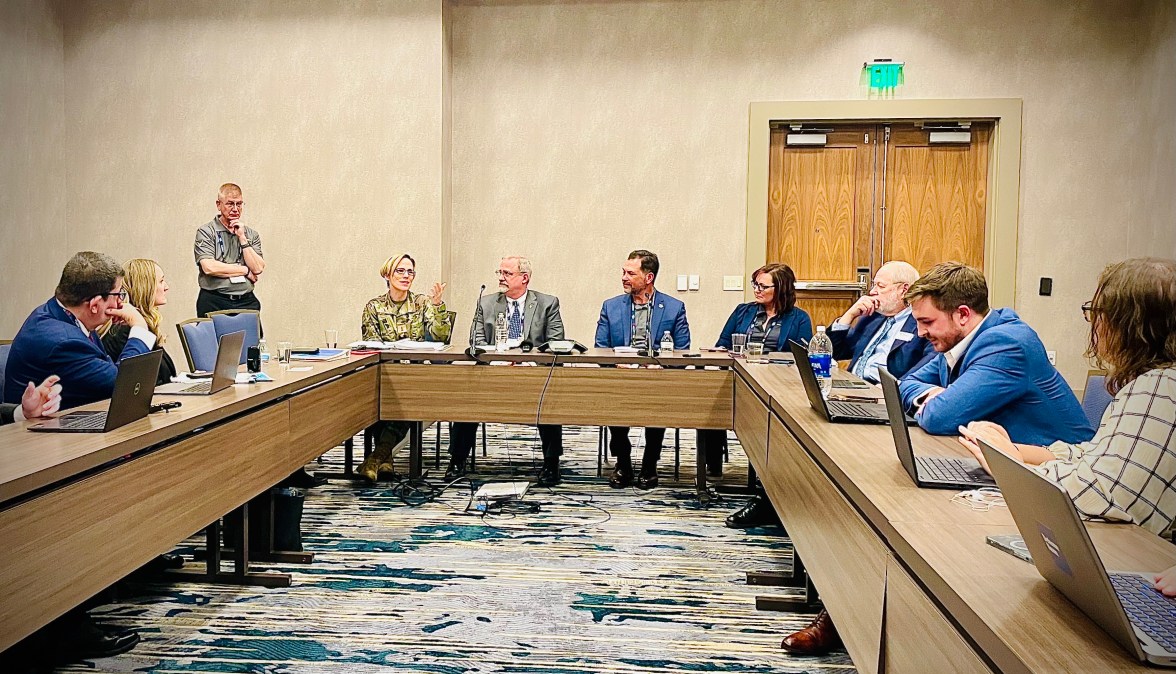AFRL unveils new directorate and ‘labverse’ to accelerate digital transformation

AURORA, Colo. — The Air Force Research Laboratory has formed a new Digital Capabilities Directorate — and a virtual environment known as a “labverse” — to speed up its modernization pursuits and enable its scientists and engineers to explore and more efficiently collaborate via a growing suite of emerging technologies, AFRL Commander Maj. Gen. Heather Pringle announced on Tuesday.
“We’re refocusing on how we are achieving digital transformation. We’re taking a services-oriented methodology,” Pringle told reporters during a media roundtable at the annual AFA Warfare Symposium.
Formally approved and established on March 1, this new Digital Capabilities Directorate (DCD) is working to leverage best practices implemented by commercial companies to pave the way for more streamlined research processes and business operations, officials say.
The organization is fusing together formerly siloed elements of AFRL’s former Research Collaboration and Computing Directorate, as well as the lab’s former Business Process Reengineering Division and others. It also has roots that trace back to a temporary digital “war room” that was stood up to help drive innovation.
Much of the activities that were being conducted under those units will continue, Pringle confirmed. However, they’ll “be nested under this bigger capability that is more modern and aligned with how we operate in today’s world,” she said.
AFRL officials involved in establishing the DCD are strategically working to help their colleagues “decouple” the data they rely on from the applications and tools they capture and model it in.
“How do you think about that data as an asset of its own and manage it, so you can build that digital thread and know that you pick the same piece of data as the last person?” AFRL’s Chief Data Officer Andrea Mahaffey told reporters.
She noted that the lab is taking “very much an API-mindset approach,” referring to the term application programming interface — a software intermediary that essentially enables two different applications to communicate.
“We don’t all need to be in the same tool, in the same platform or on the same network — we need the data to move across, and to get that data in the right hands of the right people,” Mahaffey said.
During the media briefing, AFRL’s Aerospace Systems Directorate Director Michael Gregg and Chief Enterprise Architect James Sumpter said the lab is utilizing a model-based approach and is being deliberate about balancing alignment, autonomy, automation, and agility in its in-the-works and existing architectures.
Officials said they are taking an iterative approach to innovation.
“We’ve got a big focus on architecting and building out the future of [information technology] for AFRL — and we call it the labverse. It’s an integrated digital infrastructure for science and technology,” Sumpter explained.
That virtual environment will host sensitive government workloads at impact level 5, officials also confirmed.
Although the directorate and labverse associated with it are still nascent, AFRL officials hope to extend this experiment across the broader Air Force in the future.
“We want to expand this as much as possible. So, that’s why we deliberately focused on managing our data first,” Gregg said.





